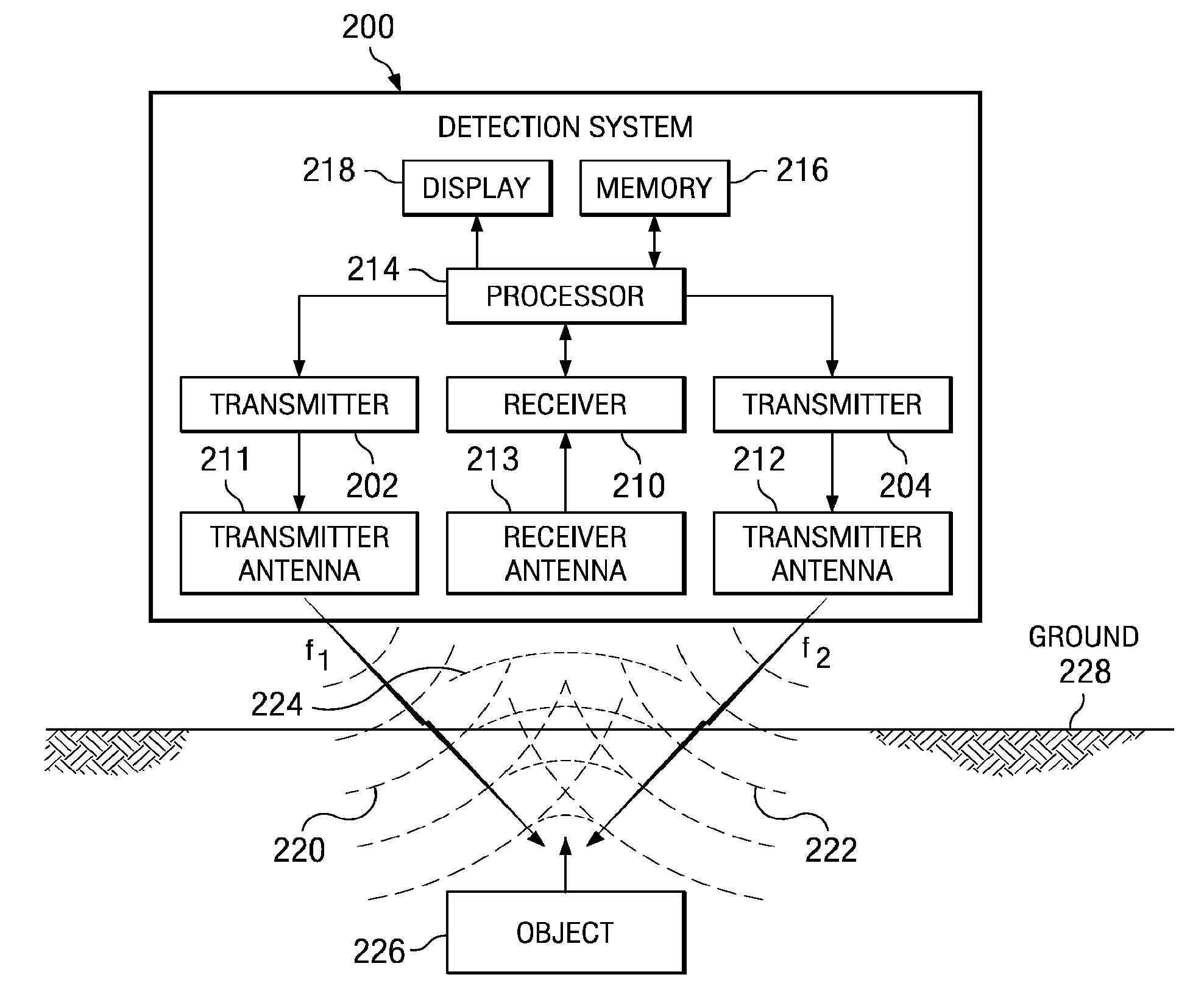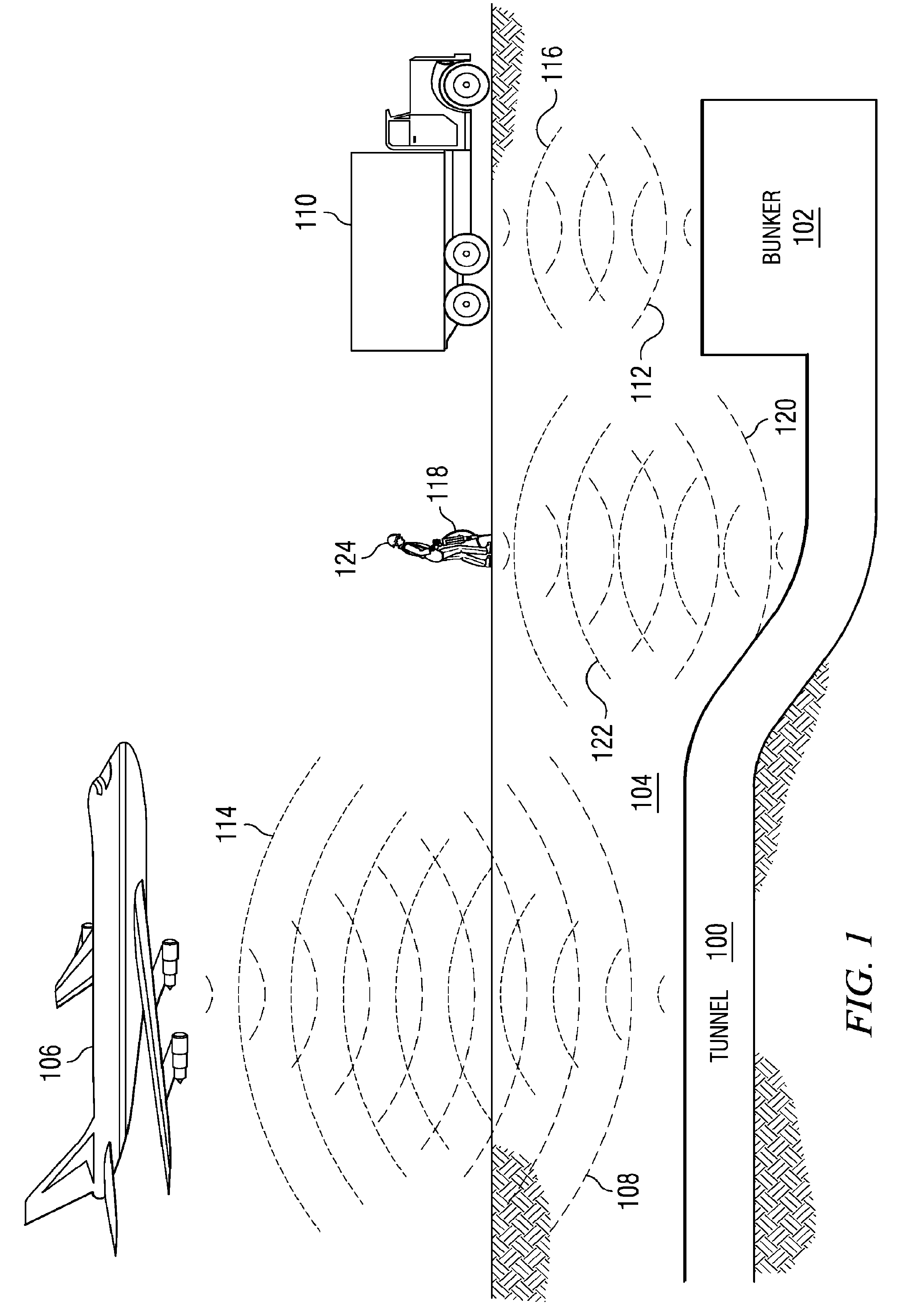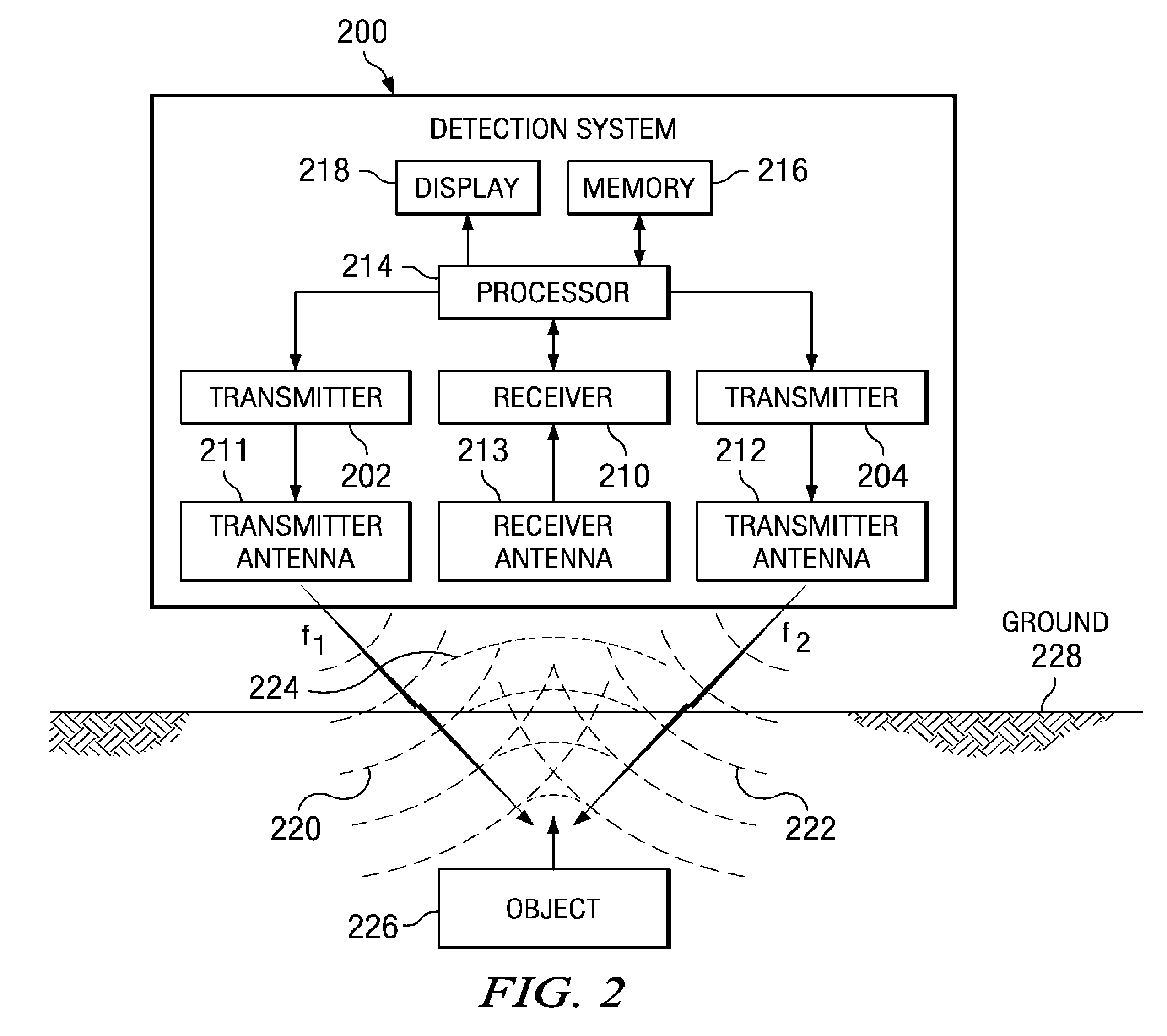Method and apparatus for using collimated and linearly polarized millimeter wave beams at Brewster's angle of incidence in ground penetrating radar to detect objects located in the ground
a technology of collimated and linear polarized millimeter wave beams and radars, applied in the field of methods and apparatus for identifying objects, can solve the problems of tunneling, tunnel depth, and currently available techniques that do not have the depth range and resolution needed to detect tunnels at the deeper end of this depth rang
- Summary
- Abstract
- Description
- Claims
- Application Information
AI Technical Summary
Benefits of technology
Problems solved by technology
Method used
Image
Examples
Embodiment Construction
[0023]With reference now to the figures and in particular with reference to FIG. 1, a diagram illustrating a method and apparatus for detecting structures buried under the ground is depicted in accordance with an advantageous embodiment. In these illustrative examples, non-linear ground penetrating radar technology is used to detect objects, such as tunnels and bunkers.
[0024]In the depicted example, electromagnetic pulses are launched into the ground and echoes from an underground object are received and interpreted in an attempt to identify the object. The different illustrative embodiments recognize that a problem with this current method of using ground penetrating radar is that finding an appropriate radio frequency to operate the system is often difficult. The different embodiments recognize that this difficulty lies in the contradictory capabilities and limitations of low and high frequencies.
[0025]The different advantageous embodiments recognize that electromagnetic technique...
PUM
 Login to View More
Login to View More Abstract
Description
Claims
Application Information
 Login to View More
Login to View More - R&D
- Intellectual Property
- Life Sciences
- Materials
- Tech Scout
- Unparalleled Data Quality
- Higher Quality Content
- 60% Fewer Hallucinations
Browse by: Latest US Patents, China's latest patents, Technical Efficacy Thesaurus, Application Domain, Technology Topic, Popular Technical Reports.
© 2025 PatSnap. All rights reserved.Legal|Privacy policy|Modern Slavery Act Transparency Statement|Sitemap|About US| Contact US: help@patsnap.com



